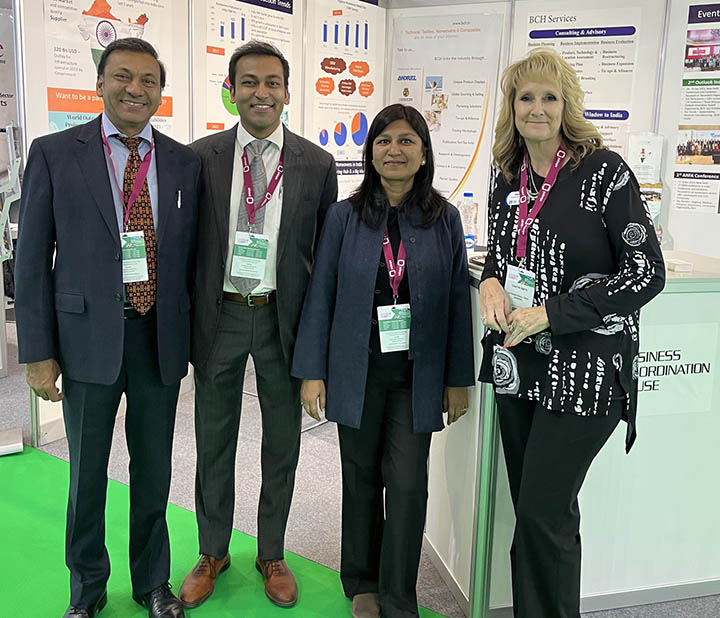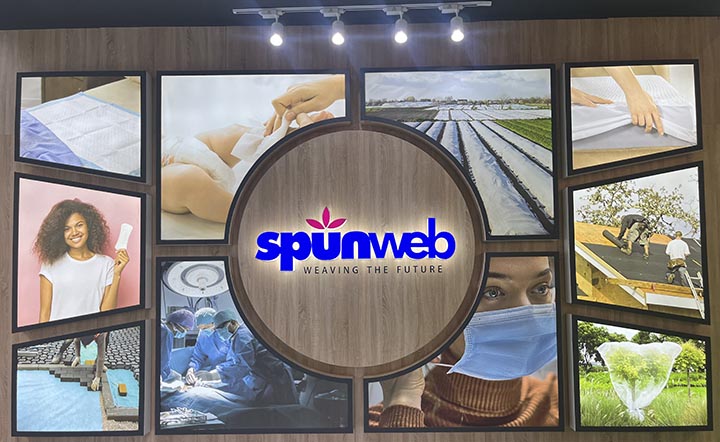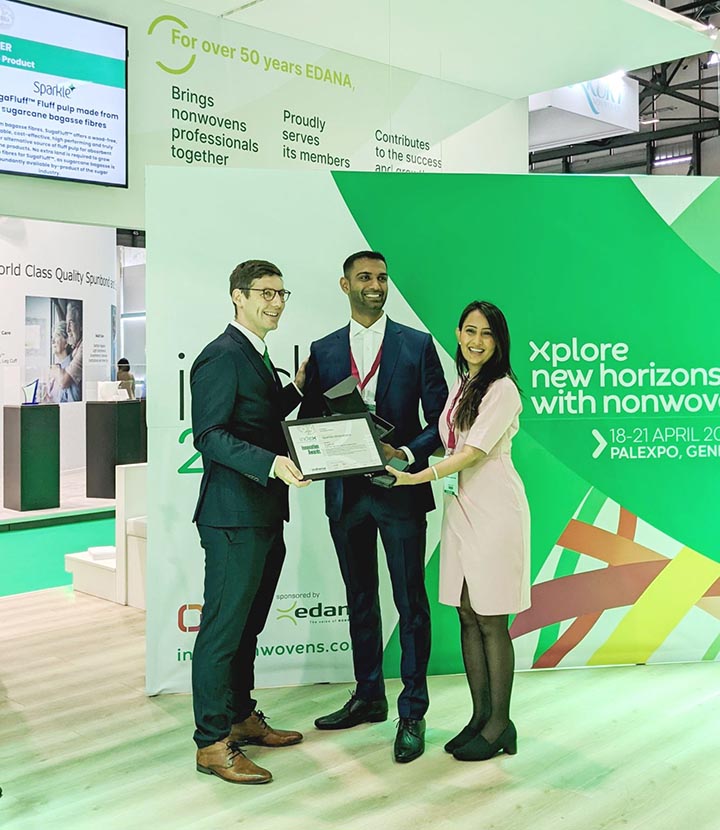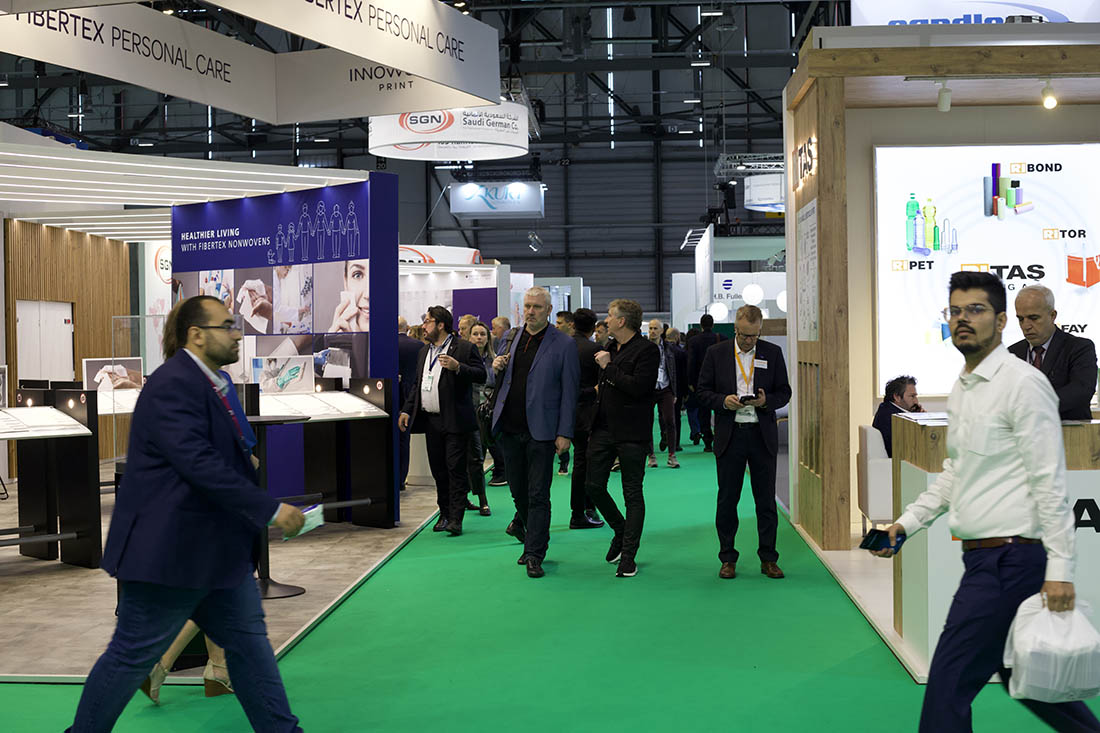Huge Potential of India’s Nonwovens Industry Highlighted at INDEX 23
In April this year, India overtook China as the world’s most populous country according to the United
Nation’s population estimates – the most significant shift in global demographics since records began.
According to the UN’s projections, which are calculated through a variety of factors, including census data and birth and death rates, India now has a population of 1,425,775,850 people. That’s a big market.
The production of nonwovens and the consumption of products made from them – especially absorbent hygiene products (AHPs) and disposable wipes – has always grown alongside population growth and the rising prosperity of a country and now it looks like it may be India’s turn.
Growth

Nonwovens production in India has already grown by over 50% in the past five years, according to Business Consulting House (BCH), the New Delhi-based consultancy and industry advisor, from 410,000 tons in 2017 to 874,000 tons in 2022. Most notably, this new capacity is going to the AHPs market, for which nonwovens production has rocketed from 16,600 tons to 84,395 tons over the same period.
“India’s nonwovens and AHP industries are currently seeing great momentum,” said Samir Gupta, BCH managing director. “New players are entering the market and existing participants are in expansion mode. Raw material supply is gradually becoming localized and import substitution is on the rise. As India gears up for the next hygiene revolution, it is witnessing new market trends coupled with a change in production dynamics. A never-seen-before user awareness is making the business very exciting.”
At this year’s INDEX 2023 show in Geneva there was a notable presence of major new Indian nonwovens manufacturers, including Global Nonwovens, based in Nasik, Maharashtra, and Spunweb, in Rajkot, Gujarat, both of whom were only founded in 2015.
First Reicofil 5

Global Nonwovens was the first nonwovens company in India to set up two state-of-the-art Reifenhäuser Reicofil R4 five-beam spunmelt lines and has since become the first company in the country to install a Reicofil R5 line – the most advanced spunmelt system for the production of AHP nonwoven components introduced at INDEX 2017.
“Every sector of the consumer lifestyle in the Indian market is growing in sophistication all the time, but the market penetration of AHPs in India is still low, primarily due to affordability,” according to Global Nonwovens CEO Anubhav Poddar. “The only way to increase market penetration is to keep the product cost low by the use of low basis weight nonwovens without compromising quality. The latest generation Reicofil RF 5 can produce ultra-thin nonwovens with good mechanical properties, softness, uniformity and finer denier filaments.”
Meanwhile, Spunweb, based in Rajkot, Gujarat has consistently invested in technology for spunmelt nonwovens and now has five lines with an annual capacity of 33,000 tons, with a similar focus on growing the domestic market.
Sparkle Innovations

There was also good news for the country at the Geneva exhibition with Indian company Sparkle Innovations being first nominated for no less than three separate categories in this year’s INDEX
Innovation Awards and then going on to claim the Sustainable Product category award for its SugaFluff absorbent cores for AHPs.
Sparkle is operating a state-of-the art converting plant in Kamrej, Gujarat, with the capacity to manufacture over one million sanitary pads per day and has established a sustainable and, in part,
fully closed loop system for its products by working with local partners in India.
Sparkle sanitary pads are made from renewable resources designed to bio-degrade in warm and humid conditions, with their top sheets, absorbent cores, release papers, pad wrapping papers and outer packaging all made of cellulose-based fibers.
SugaFluff absorbent cores are made from sugarcane bagasse – one of the world’s most abundantly available ligno-cellulose agricultural residues. In India alone, over 100 million tons of it is produced each year. Unlike planting softwood or hardwood trees, no extra land is required for bagasse as a widely available by-product of the sugar industry.
(Read our CEO interview with Sparkle’s CEO and co-founder, Chirag Virani in March-April 2023 issue of IFJ.)
Composting
In considering the entire life cycle of its products, Sparkle is going further and also piloting its GreenCycle project in Surat, Gujarat, as a first step for making the large-scale composting of absorbent hygiene products a reality.
Consumers signing up to the program are supplied with leak and odor-proof compostable bags for their used products, with a waste-management partner carrying out monthly doorstep collections.
“Many of our customers want to do their part to protect our planet by composting their used period products,” says Sparkle co-founder Hetal Virani. “However, for someone living on the 20th floor of an apartment building in an urban area without access to a backyard for composting, this is difficult. With the GreenCycle program, we aim to make it easy for our customers to live a sustainable life by offering them a service to pick up their used products every month and turning them into compost.”
Asia’s Markets
Just how quickly India’s market could grow was illustrated in one of a series of Continental Briefings held during INDEX 23, presented by Kazuaki Baba, secretary general of ANFA, the Asia Nonwoven Fabrics Association.
Baba supplied detailed production figures for the five leading nonwovens producing countries in Asia – China, India, South Korea, Taiwan and Indonesia.
With the addition of 301,000 tons of product made outside these Asian countries, the region’s total output was said to be just over seven million tons in 2022.
India is already the second biggest nonwovens manufacturer behind China in volume terms, but there is a vast difference between the two nations, with China producing some 5.3 million tons of nonwovens compared to the 874,000 tons made in India in 2022.
China’s rise over a 25-year-period, however, has been phenomenal – back in 1997 it produced just 228,000 tons and its domestic market has been on an upward curve ever since.
There is no reason to suggest the same can’t now happen in India.


